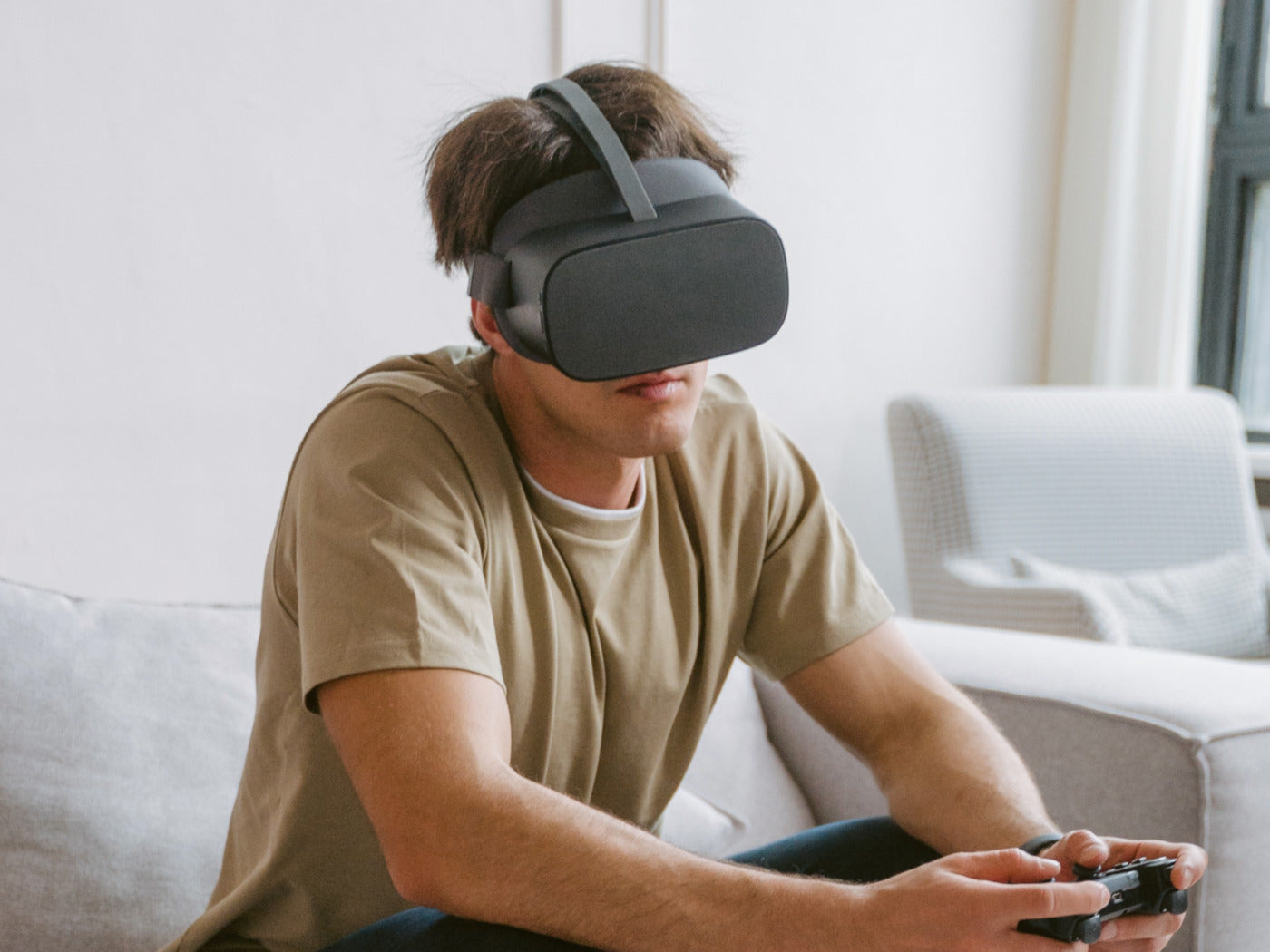VR headsets have revolutionized how we experience digital realms, but one crucial question lingers in the minds of users and potential buyers: Are VR headsets waterproof? We'll find out.
IP Ratings
Understanding the waterproofing capabilities of VR headsets is closely tied to their Ingress Protection (IP) ratings. These ratings, often displayed on electronic devices, provide valuable insights into a device's resistance to solids and liquids.

An IP rating consists of two numbers and, in some cases, a letter. We'll break down each component to help you decipher the rating on your VR headset:
The First Number (Protection Against Solids)
The initial digit in the IP rating relates to the device's protection against solid particles, such as dust and dirt. This scale spans from 0 to 6, where greater values denote enhanced protection. A score of "0" implies the absence of any safeguard against solid materials, whereas "6" indicates comprehensive protection, effectively preventing the intrusion of any dust particles into the device.
The Second Number (Protection Against Liquids)
The second digit indicates the level of protection the device offers against liquid ingress. This number ranges from 0 to 9, with higher numbers reflecting more substantial liquid protection. A rating of "0" means no protection against liquids, while "9" signifies the highest level of defense, where the device is safe from powerful jets of water.
Additional Letter (Optional)
Some IP ratings include a letter following the two numbers, denoting specific protections. For example, "K" indicates protection against high-pressure jets of water. However, in many VR headset IP ratings, you'll often encounter the letter "X," which signifies that the device's protection level against solid particles and liquids hasn't been specified or tested.
Water Proof Vs Sweat Proof VR Headsets

The terms "waterproof" and "sweatproof" are often used interchangeably, but when it comes to VR headsets, understanding the distinctions between these two features is important.
Waterproof VR Headsets
A VR headset earns the title of "waterproof" when it possesses the capability to be fully submerged in water for a specified duration without sustaining damage. The key metric that defines the waterproofing of a VR headset is its IP rating, especially the second digit.
For example, when a VR headset boasts an IP68 rating, it signifies that the device can withstand submersion in freshwater at depths of up to 1.5 meters and endure this immersion for a span of 30 minutes. These VR headsets are purposefully crafted to offer an uninterrupted and secure encounter in damp settings, including swimming pools, aquatic theme parks, and underwater simulations.
Sweatproof VR Headsets
In contrast, a VR headset qualifies as "sweatproof" when it is designed to withstand the effects of sweat without succumbing to damage. This distinction is particularly essential for users engaged in physically demanding VR activities, like high-intensity games or fitness applications. Sweatproof VR headsets are equipped to handle perspiration without allowing moisture to penetrate their sensitive electronic components.
While they may not be suitable for underwater use, they can endure substantial moisture without compromising functionality. However, the extent of sweat resistance can vary among different models, so it's essential to consult your VR headset's specifications for precise details.
List of Non-Waterproof VR Headsets

Not all VR headsets are created equal when it comes to water resistance. While some are explicitly designed to withstand water-related activities, others lack the necessary protection and are considered non-waterproof.
- Apple Vision Pro: Apple's Vision Pro VR headset is not designed to be waterproof. Users should exercise care to prevent any contact with water, as it may cause damage to the device.
- HP Reverb G2: HP's Reverb G2 is not waterproof, and users should be cautious to keep it away from water and moisture.
- HTC Vive Headsets: VR headsets from HTC, such as the Vive XR Elite, Vive Flow, Vive Focus 3, Vive Focus Plus, and Vive Pro 2, do not have waterproof capabilities. They should be kept away from water to avoid damage.
- Meta Quest 2: Similar to its predecessor, the Meta Quest 2 is not designed for water exposure. Ensuring that it stays dry is essential to its proper functioning.
- Meta Quest Pro: The Meta Quest Pro is a powerful and popular VR headset, but it is not waterproof. Users should exercise caution to prevent any contact with water, as the device lacks the necessary protection.
- Pico VR Headsets: Pico VR headsets, including models like Pico 4, Pico 4 Enterprise, Pico Neo 3 Link, Pico Neo 3 Pro, and Pico G3, do not have waterproof features. It's important to keep them dry during use.
- Pimax VR Headsets: VR headsets manufactured by Pimax, such as the Pimax Crystal, Pimax 8KX DMAS, Pimax 8K PLUS, Pimax OUTLET, and 8K X Pimax 12k, are not waterproof and should be protected from water exposure.
- Sony PS VR: Sony's PlayStation VR headset is another example of a non-waterproof device. Users should avoid exposing it to water or moisture.
- Sony PS VR2: The successor to the PlayStation VR, Sony's PS VR2, is not waterproof and should be protected from water.
- Valve Index: The Valve Index, known for its advanced features, is not waterproof. Users should ensure it remains free from water contact.
Recommended Blogs:
Recommended VR Accessory To Keep Your Headset Protected:
1. ZyberVR Waterproof Black Sling Bag
Conclusion
The waterproof capabilities of VR headsets depend on their IP ratings and specific design features. People using VR headsets should understand their device's constraints to prevent accidental water damage and ensure their VR experience lasts. Always follow the manufacturer's guidelines and handle your VR headset with care for a secure and enjoyable journey into the world of VR.





